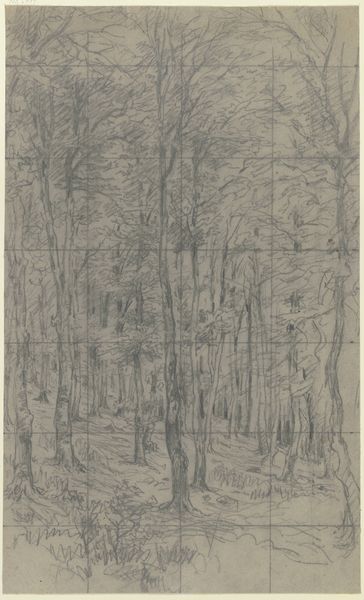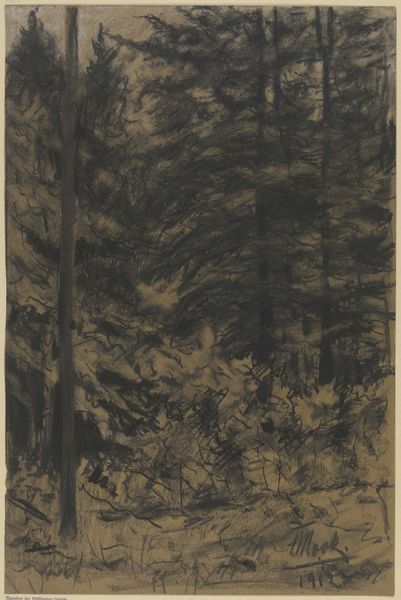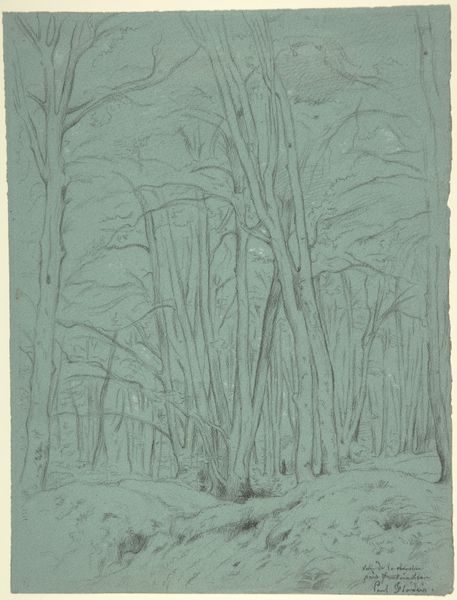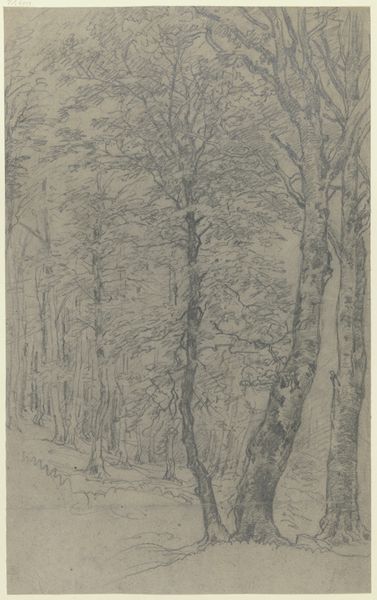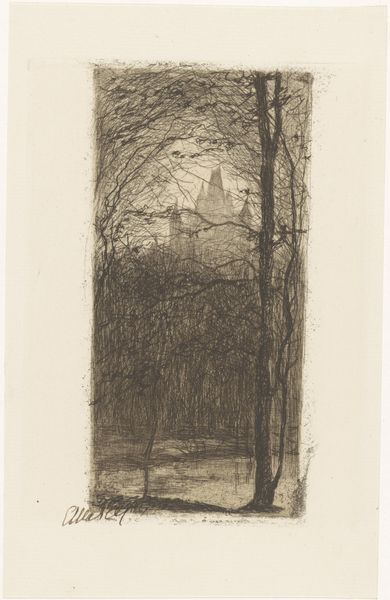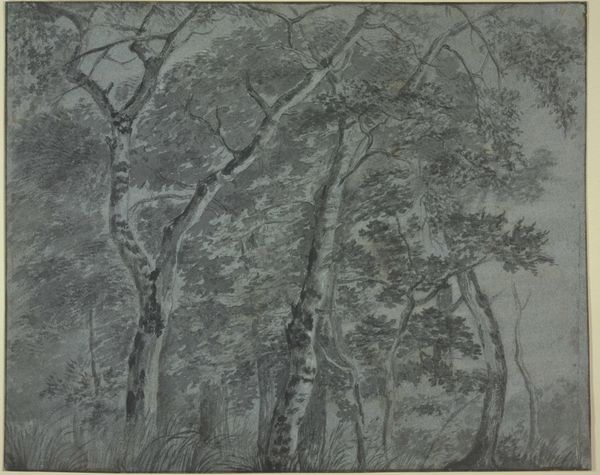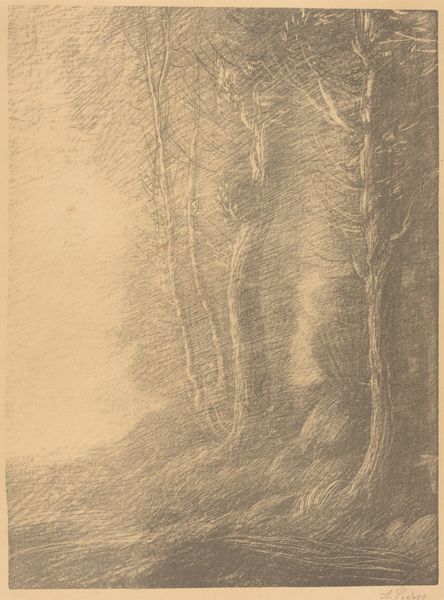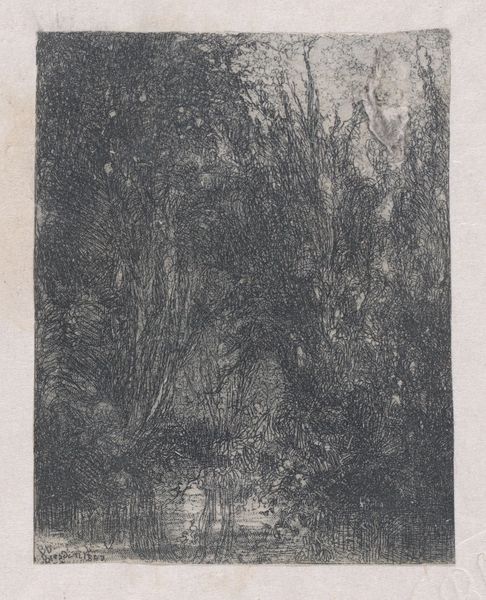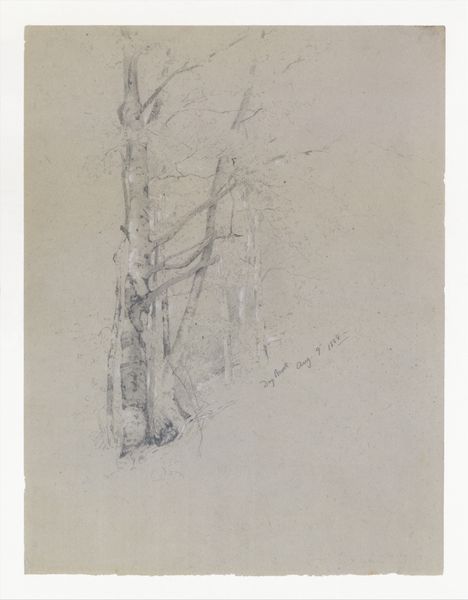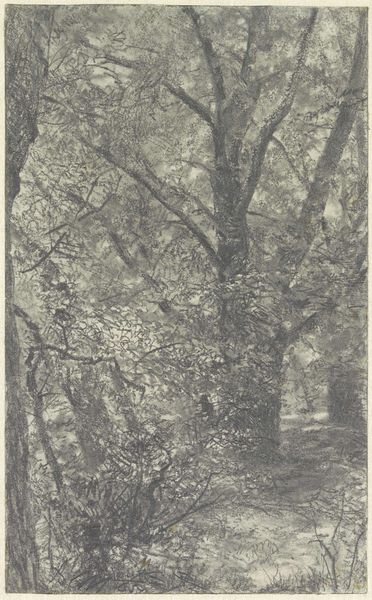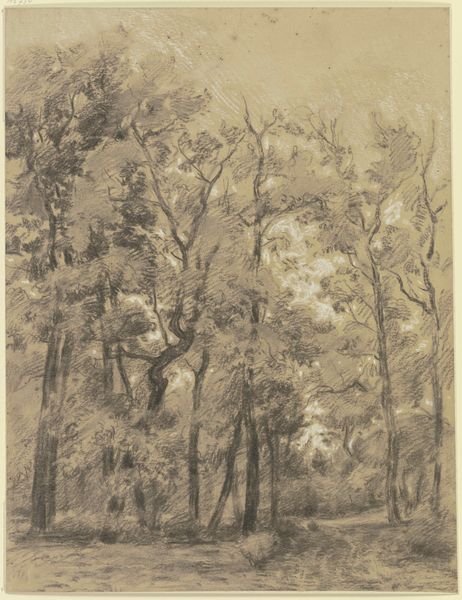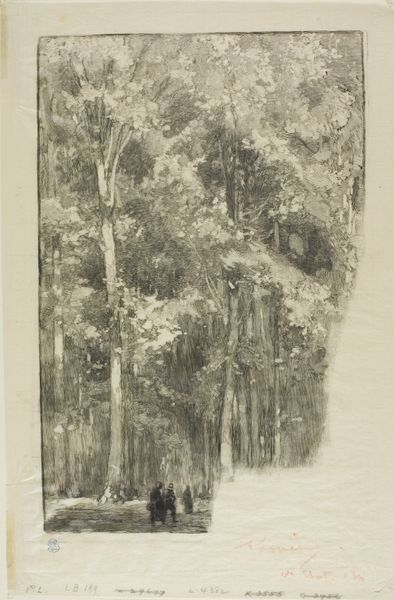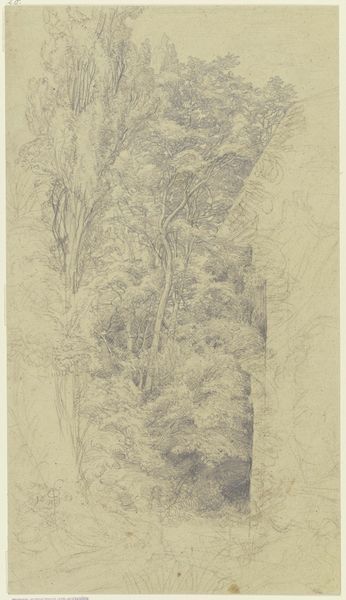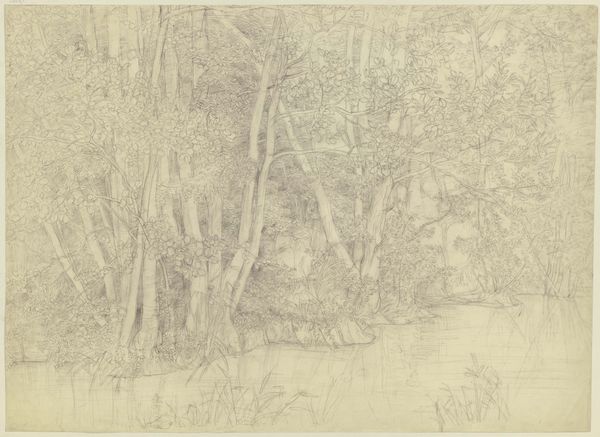
Copyright: Public Domain
Editor: Here we have Peter Becker's "Young high forest" created in 1897. It's a graphite and pencil drawing. The subdued tonality evokes a sense of quiet solitude, a peaceful refuge almost. What do you make of this seemingly simple forest scene? Curator: I see the romantic soul gazing into the self, mirrored in the seemingly infinite space of the forest. Look at how Becker uses light, not to illuminate, but to suggest a deeper, almost spiritual connection between the viewer and the natural world. What sort of mood does this evoke? Editor: Definitely one of introspection. The trees reach upwards, perhaps symbolizing aspiration, while the path seems to disappear, hinting at the unknown. Is there more to it than just pretty trees? Curator: Forests have historically been places of both fear and wonder, spaces where societal rules dissolve. Does the delicate graphite medium further enhance the fleeting, transient quality of human emotion and our connection with nature? What sort of symbolism did trees have at the time, especially within the context of burgeoning industrialisation? Editor: I hadn't considered that contrast. Perhaps the forest serves as an escape from the encroaching modern world, a reminder of something timeless and pure. It's interesting how Becker doesn’t offer a clear path; it’s more about being lost in the experience. Curator: Precisely! It is a deliberate gesture away from societal constructs and control. We’re reminded of our insignificance and our profound interconnectedness. And does that inform our cultural memory? Editor: Yes, that gives me a deeper appreciation for the symbolism present. The forest then becomes less a physical place and more a space for inner exploration and a reflection of humanity’s complex relationship with nature. Curator: Absolutely! A dense weave of visual symbols indeed.
Comments
No comments
Be the first to comment and join the conversation on the ultimate creative platform.
